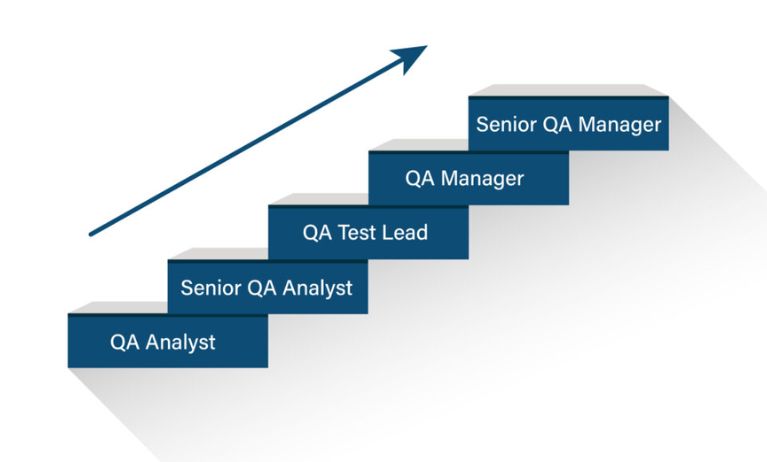Introduction
In today’s fast-paced software development world, ensuring applications run smoothly is crucial. But what happens when errors occur? Effective error handling is an essential skill for quality assurance (QA) testers, ensuring that software behaves reliably under unexpected conditions. Without proper error handling testing, software can become unstable, leading to poor user experience, security risks, and system failures.
If you’re looking to master software testing, enrolling in a Quality Assurance Tester Course can equip you with the right skills. At H2K Infosys, our QA tester training program covers all aspects of software testing, including error handling, to prepare you for real-world scenarios.
Error handling testing is a type of software testing which is performed to test the ability of the system to handle the errors and exceptions in the software during runtime. This testing is performed with the help of both developers and testers. Error handling techniques should include handling both errors and exception scenarios.
What is Error Handling Testing?
Error handling testing is the process of verifying that a software application can properly handle error conditions, whether they are caused by user input, system malfunctions, or unexpected external events. The goal is to ensure that when errors occur, the system can either recover from them gracefully or provide clear information to the user or developer about the issue.
This testing methodology ensures that software behaves predictably and does not crash or behave unpredictably under stress or in the presence of errors. It also guarantees that users are presented with meaningful error messages rather than cryptic codes that may confuse or frustrate them.
Why is Error Handling Testing Important?
Error handling testing is essential for several reasons:
Improves Software Reliability: Error handling Testing mechanisms allow applications to recover from unexpected failures, making them more reliable.
Enhances User Experience: Well-designed error messages and recovery processes improve user satisfaction, as users are better informed about what went wrong and how to fix it.
Reduces System Downtime: Effective error handling can prevent system crashes and downtime, ensuring smooth business operations.
Identifies Vulnerabilities: Testing how systems handle errors can help identify vulnerabilities or potential areas where bugs may exist.
Meets Compliance Requirements: In some industries, such as finance or healthcare, error handling testing is a compliance requirement to ensure data integrity and system availability.
Objective of Error handling testing:
The objectives of error handling testing:
- To check the system ability to handle errors.
- To check system highest soak point.
- To do sure errors can be handles properly by the system in the future.
- To do system capable of execution handling also.
Types of Errors in Software Applications
Understanding different types of errors helps QA testers design effective test cases:
- Syntax Errors: Code errors due to incorrect syntax.
- Runtime Errors: Errors that occur while the program is running (e.g., division by zero, null pointer exceptions).
- Logical Errors: Incorrect implementation of logic leading to wrong outputs.
- Validation Errors: Input-related errors due to invalid data.
- Security Errors: Vulnerabilities like SQL injection and buffer overflows.
- Network Errors: Issues related to connectivity, server downtime, or latency.
Approaches to Error Handling Testing
To ensure effective error handling, QA testers use multiple testing approaches:
1. Negative Testing
Negative testing involves testing the software with incorrect inputs to check how the system responds.
Example:
- Entering a string in a numerical field and checking if the system shows an appropriate error message.
- Providing an invalid email format and ensuring the system rejects it.
2. Boundary Value Analysis
This method tests the system at boundary limits to ensure it behaves correctly.
Example:
- If an age field accepts values between 18-60, testing with 17, 18, 60, and 61 ensures error handling is working correctly.
3. Exception Handling Testing
Exception handling testing verifies whether the software handles unexpected scenarios gracefully.
Example:
- If a user tries to withdraw more money than their account balance, the system should display an appropriate error rather than crash.
4. Fault Injection Testing
This technique intentionally introduces faults to see how the system recovers.
Example:
- Simulating a database connection failure to check if the system handles it properly.
Steps involved in the error handling testing
Test Environment:
The Qa software testing courses technique influences the setup of the test environment so that the testing process can run smoothly. This step includes planning for testing. A system that is going to be tested is made sure have to less significant data as there might be crashes in the system during testing.
Test case Generation:
Generate the test cases create the deliberate errors and exceptions and observe for the software handles it. Suppose software operates on fractions then setting the denominator of a fraction is zero. Test case generation is associated with the developing team as without knowing the internal code, test cases will not be designed.
Test Case Execution:
Once the test case generation and the real testing process begin, it is the most prominent part of the testing process. It includes running the program over the test case generated.
Result Analysis:
Execution of the test case, its result is analyzed. It involves testing the inconsistency of the expected output for generated test cases. There may be a chance of the program is going into an infinite loop which will lead up to software failure.
5Re-test:
If the testing has failed, it is reported as a defect to developers. After the defect is fixed, then once more all the above steps are performed to test the system. It also includes the system under new test cases generated.
Verification in Exception handling:
The exception handling routine programs are written by the developers to handle the exceptions and display the appropriate exception message to the user. In order to declare that exception handling routines are robust enough, it is necessary to present the code with a wide array of invalid or maybe unexpected inputs such as it can be created via software fault injection and mutation testing techniques. Protocol software is the most difficult one for which we can handle the errors and exceptions. Since a protocol implementation must be prepared to receive input that does not comply with the relevant specifications.
In order to ensure that meaningful regression analysis can be conducted throughout a software development lifecycle process any exception handling verification should be automated, test cases will be generated in a scientific, repeatable fashion. Commercially available systems exist that perform such testing.
Advantages:
- Helps us to construct to an error handling powered software.
- It always makes the software ready for all circumstances.
- It develops the exception handling technique in the software.
- Helps is maintenance of the software.
Disadvantages
- It is not budget friendly as both the developing and testing team is involved.
- The testing effort if high.
Best Practices for Error Handling
To implement robust error handling mechanisms, consider the following best practices:
Graceful Degradation
If the system encounters an error that cannot be recovered from, it should degrade gracefully. This means shutting down non-essential features while keeping the core functionality intact. For example, a payment system might disable one payment method if it fails while still allowing users to complete transactions with another.
Meaningful Error Messages
Ensure that error messages are clear and helpful. They should explain what went wrong and what the user can do to resolve the issue. Avoid using technical jargon in messages meant for end-users. For example, instead of “Error 404: Resource not found,” use “The page you’re looking for is not available. Please check the URL or try again later.”
Error Logging
Implement comprehensive logging for errors, especially for errors that are not visible to the user. Logs are essential for diagnosing issues in production environments and for troubleshooting complex systems. Ensure that sensitive data is not exposed in the logs.
Retry and Timeout Mechanisms
In cases where an error might be transient (such as a network issue), implement retry mechanisms with appropriate delays. Ensure that there is a timeout mechanism in place so that the system does not become stuck in a retry loop indefinitely.
Fail Fast
In certain situations, it is better for the system to fail fast rather than try to continue operating in an unstable state. For example, if the system detects that a critical resource is unavailable, it should fail immediately rather than trying to operate with degraded performance.
Test Error Scenarios Regularly
Make error handling tests a part of your regular testing cycle. This will help ensure that new features or changes to the system do not introduce new error handling issues.
Tools for Error Handling Testing
Several tools can assist with error handling testing by simulating errors and monitoring how systems respond. Here are some popular options:
Chaos Monkey: Originally developed by Netflix, Chaos Monkey randomly terminates instances in production to test a system’s resilience to failures.
Fiddler: This tool allows developers to simulate network errors by intercepting and modifying HTTP requests.
JUnit: A popular testing framework for Java that allows for testing exceptions and error conditions in unit tests.
Sentry: A tool for real-time error tracking that provides detailed reports on errors in production environments.
Postman: Often used for API testing, Postman allows testers to simulate different response statuses to test error handling in RESTful APIs.
Real-World Case Studies on Error Handling Failures
1. Amazon Web Services (AWS) Outage
In 2017, AWS suffered a major outage due to a human error in its Simple Storage Service (S3). The lack of proper error handling caused multiple applications, including Netflix and Slack, to go down. This incident highlighted the importance of robust error handling mechanisms to prevent system-wide failures.
2. Ariane 5 Rocket Explosion
The 1996 explosion of the Ariane 5 rocket was caused by an unhandled overflow error in the software. A simple exception handling mechanism could have prevented the disaster, saving millions of dollars and years of research.
How H2K Infosys Prepares You for Real-World QA Testing
Enrolling in a quality assurance software testing course at H2K Infosys provides hands-on experience with error handling and other crucial testing techniques. Here’s what our QA online training covers:
- Comprehensive Curriculum: Covers manual testing, automation testing, and error handling strategies.
- Real-World Projects: Work on industry-based projects to gain practical exposure.
- Expert Instructors: Learn from experienced professionals in the QA industry.
- Flexible Learning: Access training from anywhere with our online courses.
Key Takeaways
- Error handling testing ensures software stability, security, and user satisfaction.
- Various types of errors require different testing strategies.
- Effective testing includes negative testing, boundary value analysis, and exception handling.
- Real-world failures like AWS outages and space mission failures highlight the importance of error handling.
- Hands-on QA training at H2K Infosys prepares you for real-world testing challenges.
Conclusion
Error handling testing is a crucial aspect of software quality assurance that ensures applications can manage and recover from errors gracefully. It improves the overall reliability of software systems, enhances user experience, and helps meet compliance requirements in certain industries.
By identifying potential error scenarios, simulating errors, and verifying recovery mechanisms, teams can build software that is resilient and robust. By following best practices such as implementing clear error messages, comprehensive logging, and retry mechanisms, developers can ensure that their applications are well-prepared for any errors that come their way.
Mastering error handling testing is essential for a successful career in software testing. Join H2K Infosys’ QA tester training program to gain in-depth knowledge and hands-on experience. Start your journey today and become a skilled QA professional!Mastering error handling testing is essential for a successful career in software testing. Join H2K Infosys’ QA tester training program to gain in-depth knowledge and hands-on experience. Start your journey today and become a skilled QA professional!





























13 Responses
Error handling Testing
Error handling testing is a type of software testing which is performed to test the ability of the system to handle the errors and exceptions in the software during runtime. This type of testing is basically performed with the help of both developers and testers. Error handling testing not only focuses on the determination of error but also focuses on exception handling.
Steps involved in the Error Handling testing:
1. Test Environment: The software testing technique influences the setup of the test environment so that the testing process can run smoothly.
2. Test case Generation: Generate the test cases create the deliberate errors and exceptions and observe for the software handles it.
3. Test Case Execution: Once the test case generation and the real testing process begin, it is the most prominent part of the testing process. It includes running the program over the test case generated.
4. Result Analysis: Execution of the test case, its result is analyzed. It involves testing the inconsistency of the expected output for generated test cases.
5. Re-test: If the testing has failed, it is reported as a defect to developers. After the defect is fixed, then once more all the above steps are performed to test the system.
It is a software testing which is performed to check the ability of the system to handle the errors and exceptions in the software during runtime. Error handling techniques should include handling both errors and exception scenarios. Both developers and testers are involved in testing which makes it quite expensive. The main purpose is to check the system ability to handle errors and its highest soak point. It helps in maintenance of the software. Steps involved in the error handling testing are:
1. Setup the Test Environment
2. Generating the test cases
3. Executing the test cases
4. Analyzing the result
5. Re-testing
Error handling testing is a type of software testing that is performed to check whether the system is capable of or able to handle the errors that may happen in future. This type of testing is basically performed with the help of both developers and the testers. Error handling testing not only focuses on the determination of error but also focuses on the exception handling.
Objective of Error Handling Testing:
The objective of error handling testing is:
• To check the system ability to handle errors.
• To check the system highest soak point.
• To make sure errors can be handles properly by the system in the future.
• To make system capable of exception handling also.
Error handling testing is a type of software testing that is performed to check whether the system is capable of or able to handle the errors that may happen in future. This type of testing is basically performed with the help of both developers and the testers.
The objectives of error handling testing:
1. To check the system ability to handle errors.
2. To check system highest soak point.
3. To do sure errors can be handles properly by the system in the future.
4. To do system capable of execution handling also.
It is software testing to check the ability of the system to handle the errors and exceptions in the software during runtime. Error handling techniques should include handling both errors and exception scenarios. Both developers and testers are involved in testing which makes it quite expensive. The main purpose is to check the system ability to handle errors and its highest consumption point. It helps in maintenance of the software. Steps involved in the error handling testing are:
1. Setup the Test Environment
2. Generating the test cases
3. Executing the test cases
4. Analyzing the result
5. Re-testing
Error handling testing is a type of software testing which is performed to test the ability of the system to handle the errors and exceptions in the software during runtime. This testing is performed with the help of both developers and testers.
Steps involved in the error handling testing are:
1. Setup the Test Environment
2. Generating the test cases
3. Executing the test cases
4. Analyzing the result
5. Re-testing
Error handling testing is a type of software testing that is performed to check whether the system is capable of or able to handle the errors that may happen in future. This type of testing is basically performed with the help of both developers and the testers.
Error handling testing is a type of software testing which is performed to test the ability of the system to handle the errors and exceptions in the software during runtime. This testing is performed with the help of both developers and testers.
he objectives of error handling testing:
To check the system ability to handle errors.
To check system highest soak point.
To do sure errors can be handles properly by the system in the future.
To do system capable of execution handling also
Error handling testing is a type of software testing that is performed to check whether the system is capable of or able to handle the errors that may happen in future.
The objectives of error handling testing:
To check the system ability to handle errors.
To check system highest soak point.
Error handling testing is the type of testing in which the software is tested to check it’s ability to handle the errors and exception. Error handling testing is done by both developers and testers.
in this technique scenario with errors and exception are created.
Objectives of error handling testing are
1.To check the ability of the application to handle the errors and exception without crashing and failure.
2.To make sure errors can be handle properly by the system in future
The steps involves in error handling testing are
1.environment setup
2.Test Generation
3.test execution and result analysis
4.Retesting
Error handling testing is a type of software testing that is performed to check whether the system is capable of or able to handle the errors that may happen in future. This type of testing is basically performed with the help of both developers and the testers.
The objectives of error handling testing:
1. To check the system ability to handle errors.
2. To check system highest soak point.
3. To do sure errors can be handles properly by the system in the future.
4. To do system capable of execution handling also.
To test the ability of the system to handle the errors and exceptions in the software during runtime. This testing is performed with the help of both developers and testers. Error handling techniques should include handling both errors and exception scenarios.
Steps involved in the error handling testing
Test Environment
Test case Generation
Test Case Execution
Result Analysis
Re-test
Error handling testing is a type of software testing which is performed to test the ability of the system to handle the errors and exceptions in the software during runtime. This testing is performed with the help of both developers and testers. Error handling techniques should include handling both errors and exception scenarios.